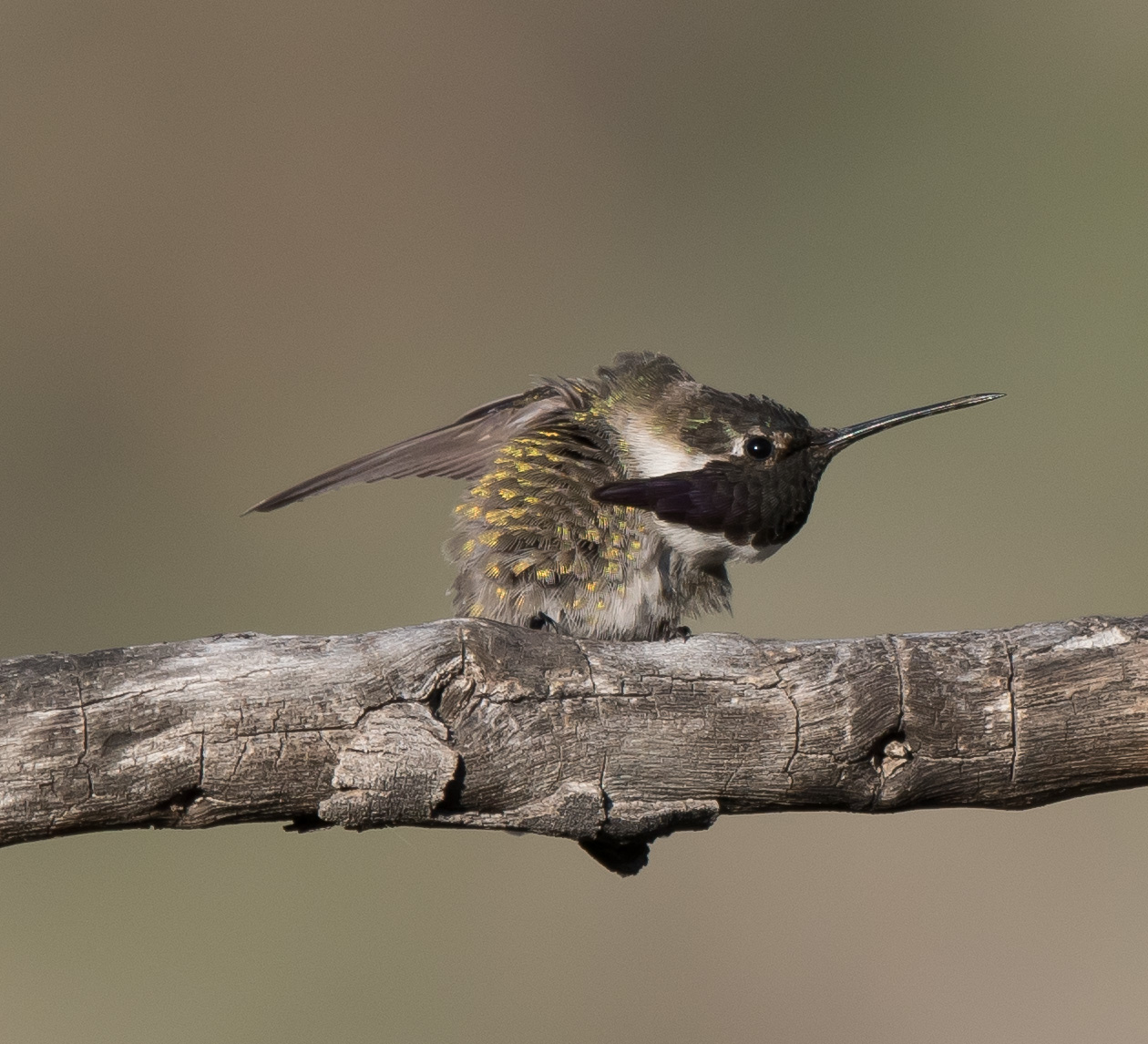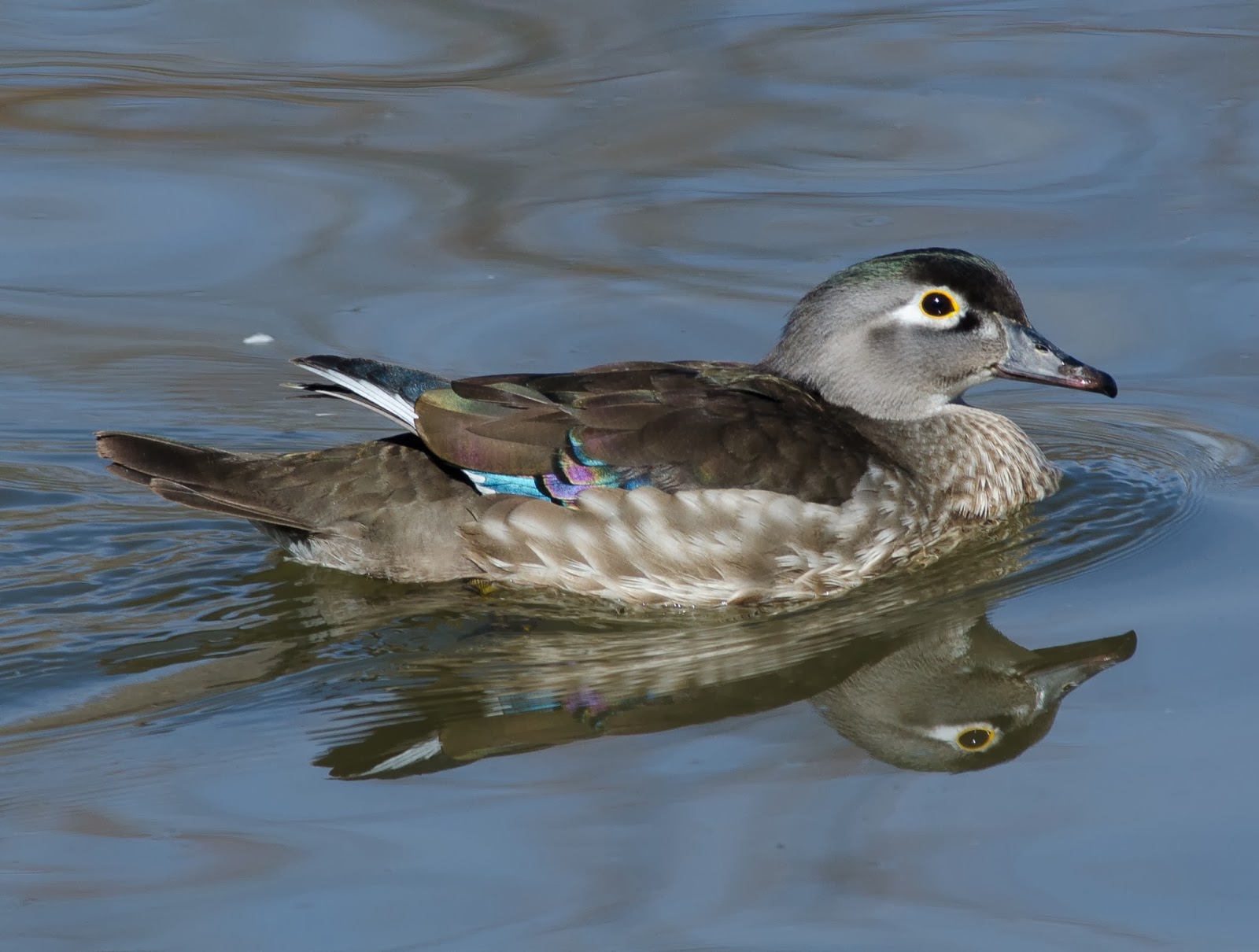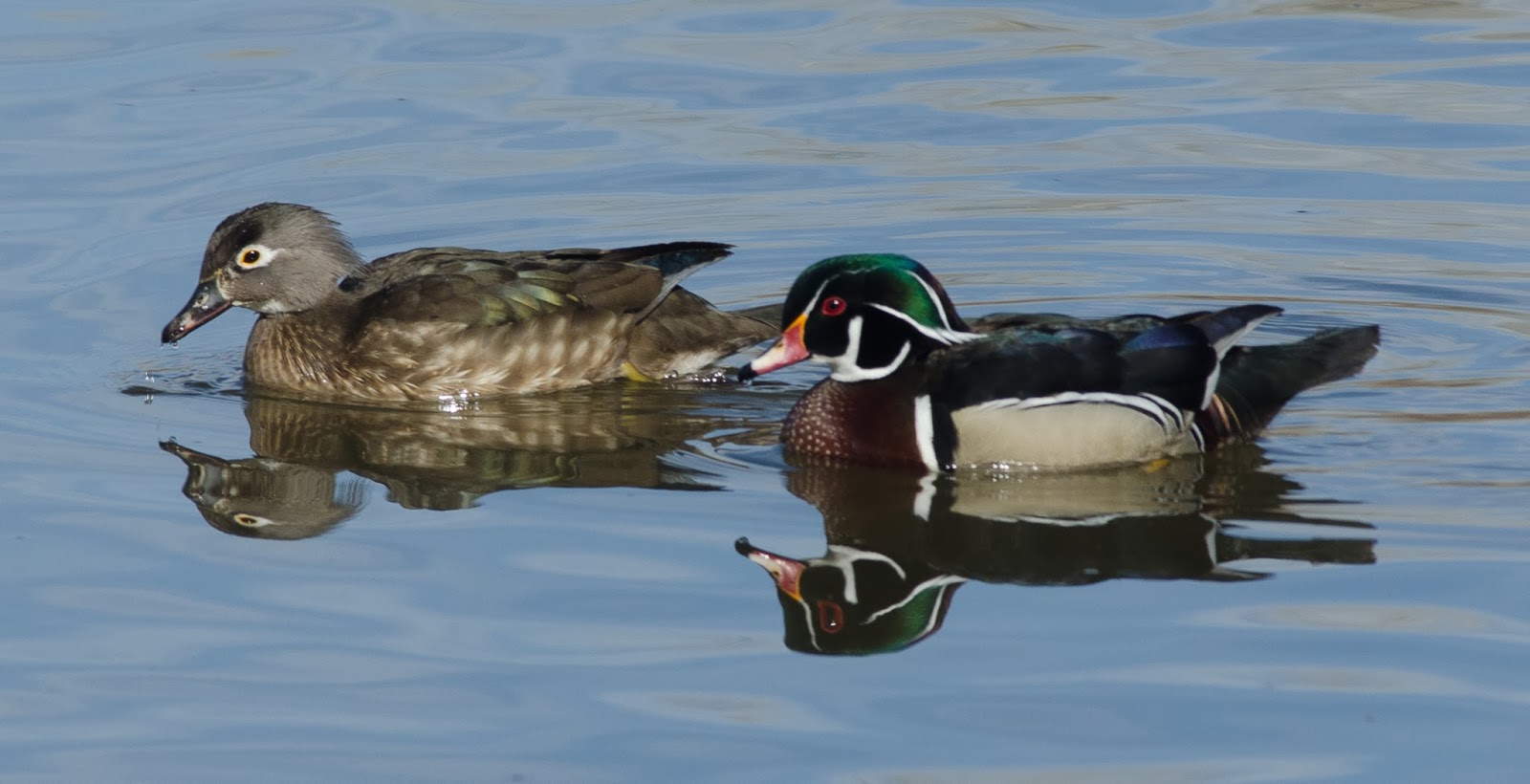Earlier in March, I was contacted by Madison Creech who had found my listing in Arizona Birding Pals, http://www.birdingpal.org/az.htm. She is a graduate student at ASU studying art with a focus on birds. She wanted to have someone show her around and focus on birds so I gladly accepted and we made plans to meet at the Gilbert Riparian Water Preserve on March 23rd. This place is always an excellent place to watch birds and their behavior and is usually a great place to capture photos for those that focus on photography. We spent a great deal of time talking and discussing birds and the various species we were seeing. In order to introduce Madison to many of the different species, I would try to point them out and talk about them briefly and encouraged her to take as many photos as she liked. Of course I took a few photos along the way as well.
The American Avocets were seen in good numbers and some were even performing their courtship rituals; this female appeared quite receptive while the male danced around her. Note the very strong upturned bill of the female. This is one way to sex these birds since their coloration and markings appear to be the same. Females have a more pronounced upturned bill than do the males.
American Avocet
In another pond we discovered a male Blue-winged Teal, which is not a rare bird by any means, but they are not that common in Arizona and always neat to see and add to the years's list for those that are listers. The white mask on the drakes are usually the best identifying field mark.
Blue-winged Teal
As we walked the pathways between the ponds, various birds were being seen including one of my favorites, the Curve-billed Thrasher. Maybe not considered the most colorful bird, but once you see that orange eye and that huge curved bill, one takes notice of this bird. Not only that, but this bird can sing as well as a Mockingbird and this one was singing up a storm right above us.
Curve-billed Thrasher
We also found a few Brown-headed Cowbirds, which many birders do not like very well due to the fact that they are parasitic birds. They do not build nests of their own; the female searches out other bird nests that are left unattended for a short time and then lays an egg in the nest. The result is the foster bird then incubates the egg and hatches it and feeds it along with it own clutch of babies. One of the problems in this, is the fact that many times, the parents real chicks are much smaller than the Cowbird chick and many times only the Cowbird chick survives. Interesting bird behavior.
Brown-headed Cowbird
The critter that first gave us a lot of photos was one of the resident Coyotes. As we were standing in a clearing of Pond 7, this animal can wandering out into the mud flats probably with an original focus on trying to catch some waterfowl for breakfast. It gave us some looks of interest, but then sauntered away and then double back and started walking towards us before disappearing into the underbrush along the edge of the pond.
Coyote
(No, this was not a growl, more like a yawn.)
On our way out of the preserve, we passed by the fishing pond where the Ring-necked Ducks congregate. These ducks are fed by many of the locals and with the boardwalk over the north end of the fishing pond, they can swim by quite close and that view helps to show why they were named Ring-necked Ducks instead of ring-billed ducks. That neck ring on the males in not very noticeable at a distance, but the ring on the bill is much more noticeable. Many think this duck is misnamed.
Ring-necked Duck
Ring-necked Duck
And one last bird that I photographed on the way out and not one that I photograph very often, the most common House Sparrow. It came to me a few weeks ago that I have never posted a photo of this most common and widespread bird to any of my blogs, so now for the sake of adding a photo of this species to my list of bird photographs on my blog site, I give you a female house Sparrow.
House Sparrow































































